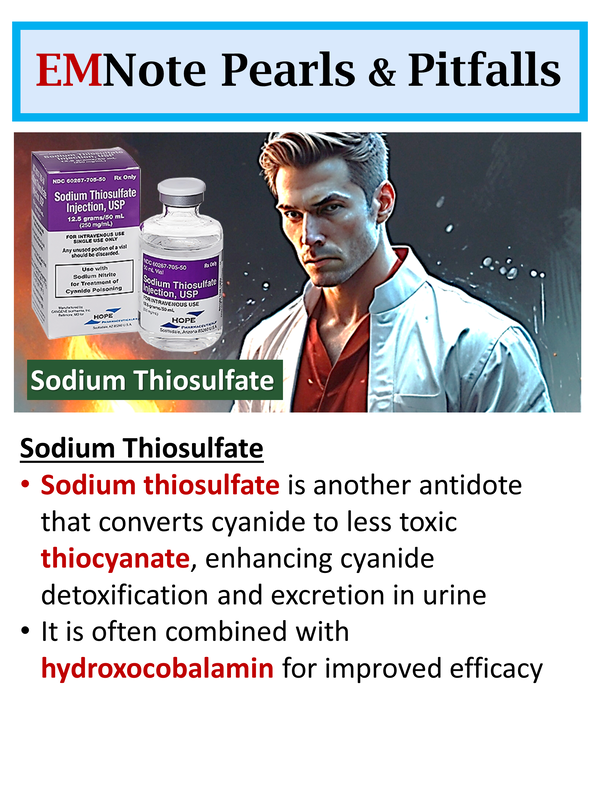|
Potential Antidotes for Cyanide Poisoning:
Hydroxocobalamin is a commonly used antidote for cyanide poisoning. It binds to cyanide, forming cyanocobalamin which is excreted through the kidneys. Hydroxocobalamin rapidly removes free cyanide from the body and has a wide therapeutic window, allowing intravenous administration as a single dose. Sodium thiosulfate is another antidote that converts cyanide to less toxic thiocyanate, enhancing cyanide detoxification and excretion in urine. It is often combined with hydroxocobalamin for improved efficacy. Methylene blue is an alternative that can reduce cyanide toxicity by restoring oxidation-reduction equilibrium and calcium channel activity. However, it requires caution in G6PD deficiency patients as it can induce hemolysis. Amyl nitrite inhalation and intravenous sodium nitrite can induce methemoglobinemia, sequestering cyanide and reducing toxicity. Sodium thiosulfate is then given to enhance cyanide detoxification and excretion in urine.
0 Comments
Leave a Reply. |

Author
|
Proudly powered by Weebly
